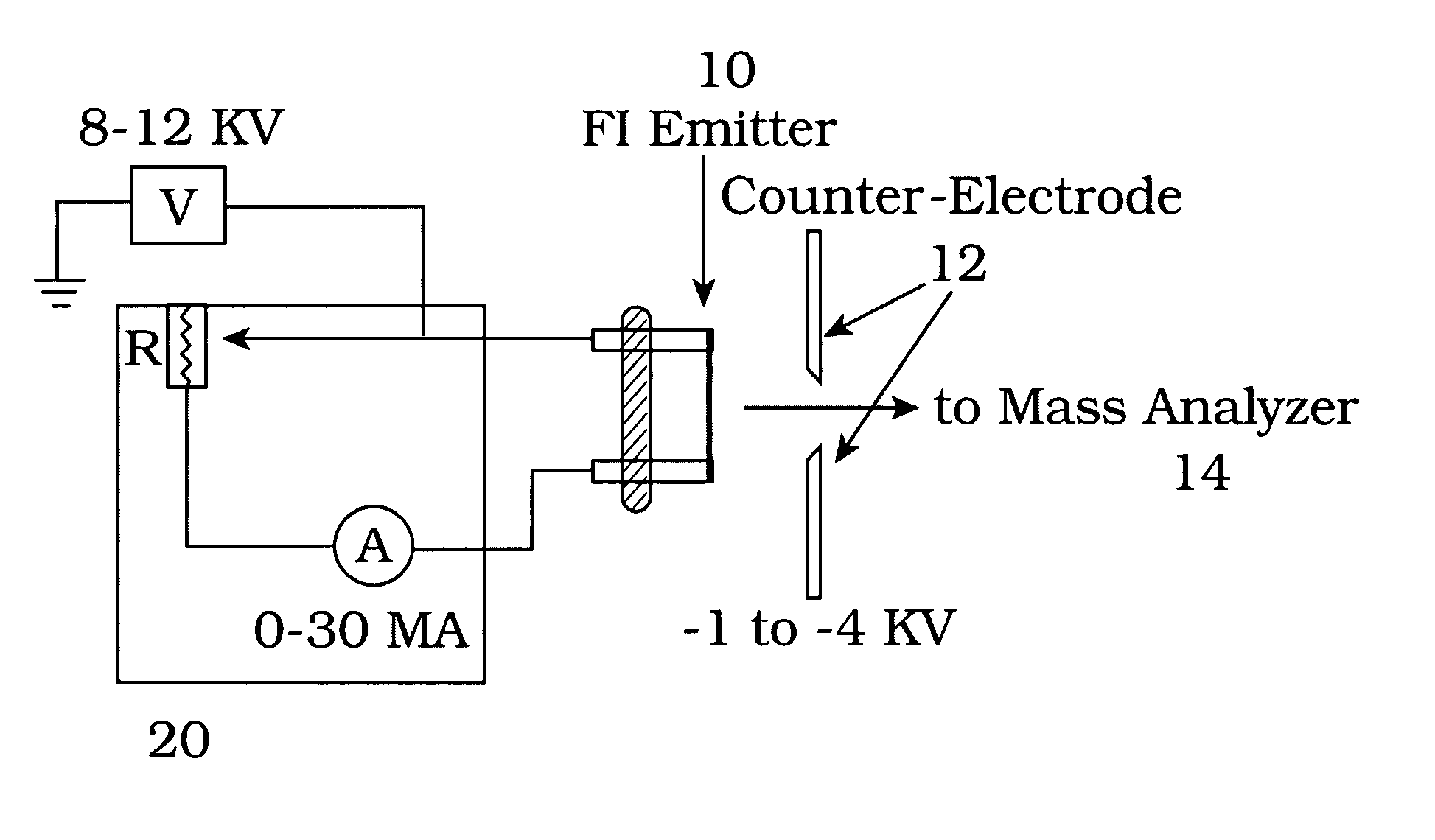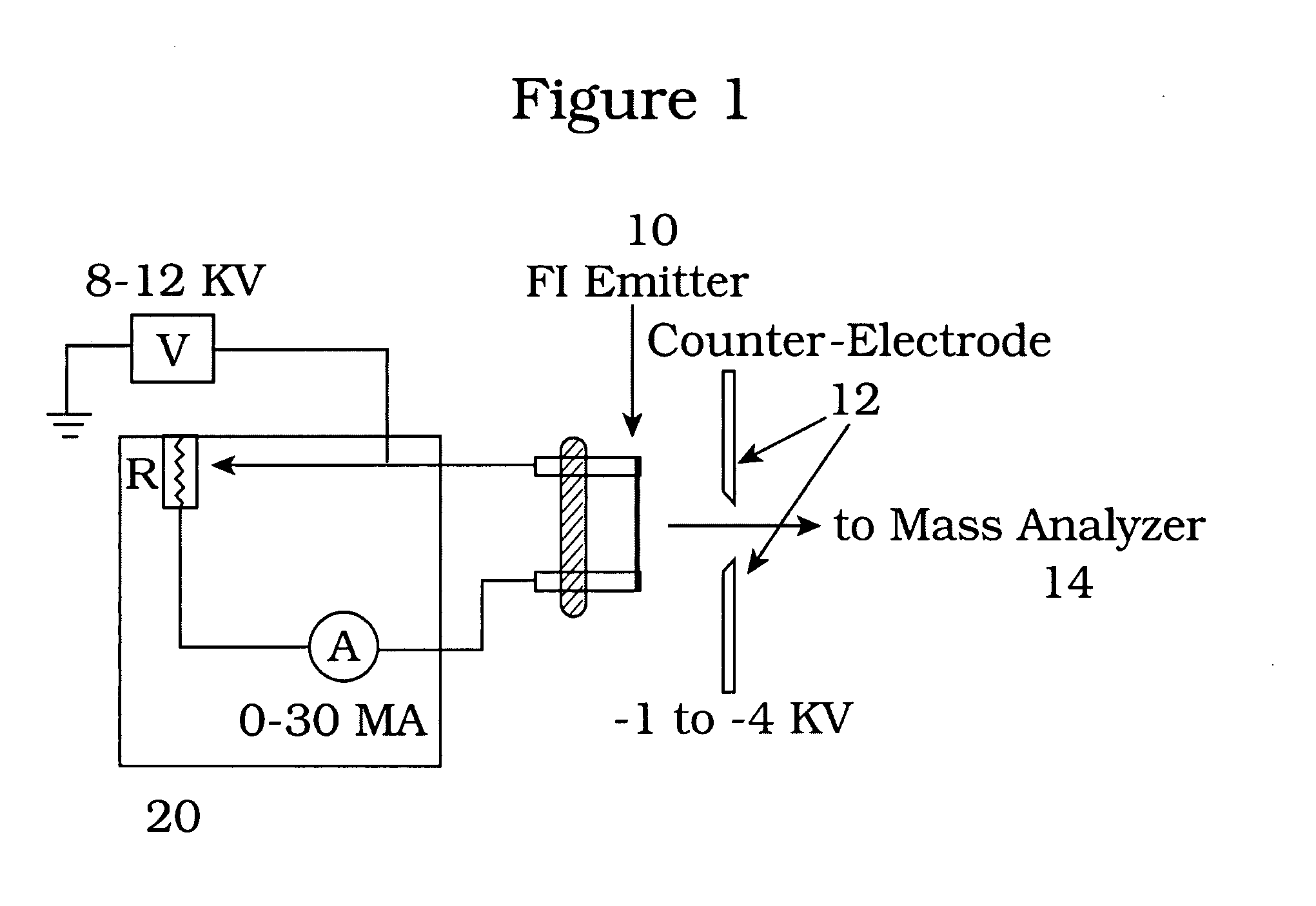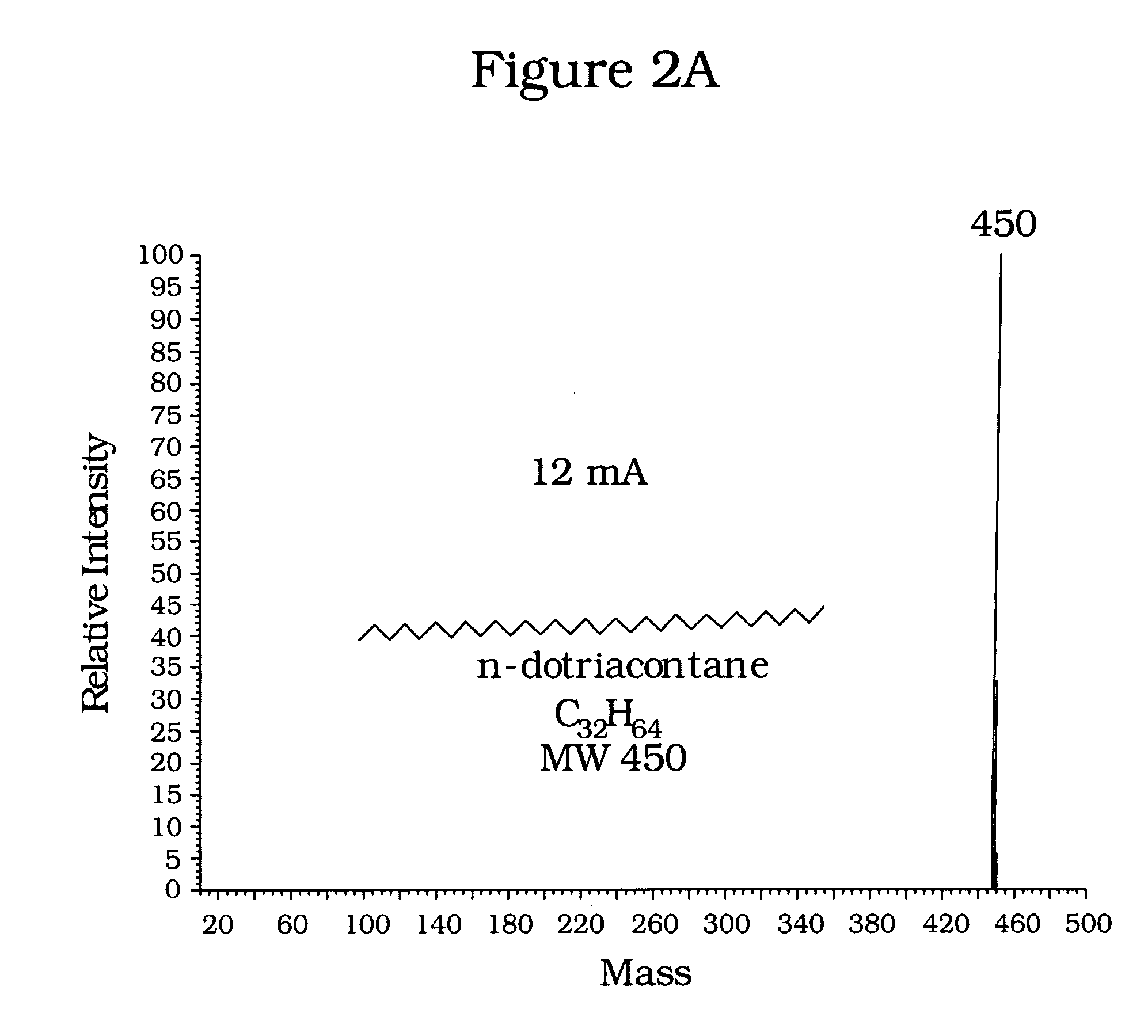Method of producing molecular profiles of isoparaffins by low emitter current field ionization mass spectrometry
a technology of emitter current and molecular weight, which is applied in the direction of dispersed particle separation, separation processes, instruments, etc., can solve the problems of inability to accurately estimate the estimation technique, and the failure of the emitter current to successfully use the isoparaffin number or molecular weight distribution direct determination method, etc., to reduce or eliminate the fragmentation of isoparaffin molecular ions
- Summary
- Abstract
- Description
- Claims
- Application Information
AI Technical Summary
Benefits of technology
Problems solved by technology
Method used
Image
Examples
example 1
[0020] A VG-ZAB high performance mass spectrometer was fitted with a field ionization emitter from Linden ChroMas Spec. The emitter was fashioned from a tungsten wire having a nominal diameter of about five (5) micrometers. The emitter wire was “activated” by the manufacturer to produce dendrites around the wire to increase the area of high electric field. Samples for analysis are introduced via a direct insertion probe that was temperature programmable from room temperature to about 500° C. The foregoing apparatus is housed in a vacuum chamber capable of sustaining a vacuum of about 10−6 torr, by conventional means.
[0021] Commercial samples of dotriacontane (C32H64), cholestane (C27 H48) and squalane (C30H62) were chosen to illustrate application of the invention to analysis of normal paraffins, naphthenes, and isoparaffins, respectively. Mass spectra were obtained for the dotriacontane and cholestane samples, first using conventional emission currents of about thirty (30) mA, fol...
example 2
[0023] Comparative analytical techniques were used to analyze two additional commercial isoparaffin containing products. The first Sample A was a low boiling point product, having an initial boiling point of 320° F. and a dry point of 349° F. The second Sample, B, was a high boiling point product, having an initial boiling point of 523° F. and a dry point of 594° F.
[0024] GC / MS Chromatograms were obtained for Sample A (Isopar G), and are shown in FIG. 5. All of the components eluting off a boiling point GC column between nC9 (approx. 3.0 minutes) and nC11 (approx. 8 minutes). Chromatograms 5A (142 Daltons) and 5B (156 Daltons) show a presence of C10 and C11 isoparaffins, chromatogram 5C shows substantially no presence of C12 isoparaffins (i.e. zero response in the mass 170 chromatogram). Overlap between C10 and C11 isoparaffins and the elution of some C11 isoparaffins ahead of nC10 illustrate the shortcoming of these analytical techniques for defining carbon number distribution of ...
example 3
[0029] A 4 cSt polyalpha olefin (PAO) that contains C30, C32, C34 and some C36 isoparaffins, is examined under different emitter current conditions. The top trace of FIG. 8 shows that intact molecular ion peaks at 422, 450, 478 and 506 Da and their associated isotopic peaks are predominant at in-scan emitter current of less than about 1 mA and flash-off current at 12 mA. At a 20 mA in scan emitter current, in contrast, fragment ions are predominant. Instead of molecular ions, (M-2) and associated fragment ion peaks dominate the FIMS spectrum shown as the bottom trace of FIG. 8. The masses of these M-2 ions correspond to 1-ring cycloparaffins of the same carbon number. Artifact peaks are produced at high emitter current, leading to misidentification of acyclic paraffins as 1-ring cycloparaffins.
PUM
 Login to View More
Login to View More Abstract
Description
Claims
Application Information
 Login to View More
Login to View More - R&D
- Intellectual Property
- Life Sciences
- Materials
- Tech Scout
- Unparalleled Data Quality
- Higher Quality Content
- 60% Fewer Hallucinations
Browse by: Latest US Patents, China's latest patents, Technical Efficacy Thesaurus, Application Domain, Technology Topic, Popular Technical Reports.
© 2025 PatSnap. All rights reserved.Legal|Privacy policy|Modern Slavery Act Transparency Statement|Sitemap|About US| Contact US: help@patsnap.com



